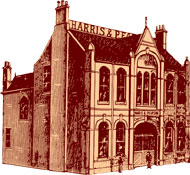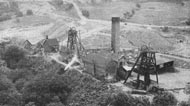
|
|
|
|
|
|
Home | Company
History | The
Office Building | Recollections | Family History | History of Firebricks | The Restoration Project | Conserving
Historic Buildings
|
|
The History Of Fire Bricks (Contributed by John Cooksey)The Black Country This small area of the Midlands which, in my estimate, covers an area 13 miles by 9 miles only became known as ‘the Black Country' in about 1840. Before this it was part of the giant South Staffordshire East Worcestershire coalfield. One person travelling through the area described it as ‘black by day and red by night, a place were no trees grew, no birds sang, and the rivers and pools where black and lifeless, and the life expectancy, was 34 years, all this to give other people materials they needed'. In this small area in 1860 there were 200 blast furnaces, over 2,000 puddling furnaces, 86 Brickyards and dozens of foundries, making a vast amount of items from lots of different metals. All of these, plus countless others outside the district, were crying out for refractories. To understand more about the development of the firebrick industry there is a need to go back to the early years before the Black Country, to 1718 when Abraham Darby was using the area's clay and bricks to line his furnace at Coalbrookedale. In 1740 Benjamin Huntsman, when experimenting with crucible steel at Sheffield, was using this area's fireclay to make his crucibles, because there was no finer in the world. In 1759 the excellence of this fireclay can again be judged. Refractories from here made the fantastic journey to Scotland where they were used to line a blast Furnace at the Carron iron works that was the first in Scotland to use coke instead of charcoal to melt its iron. |
John Cooksey's Book |
© Copyright WMHBT
